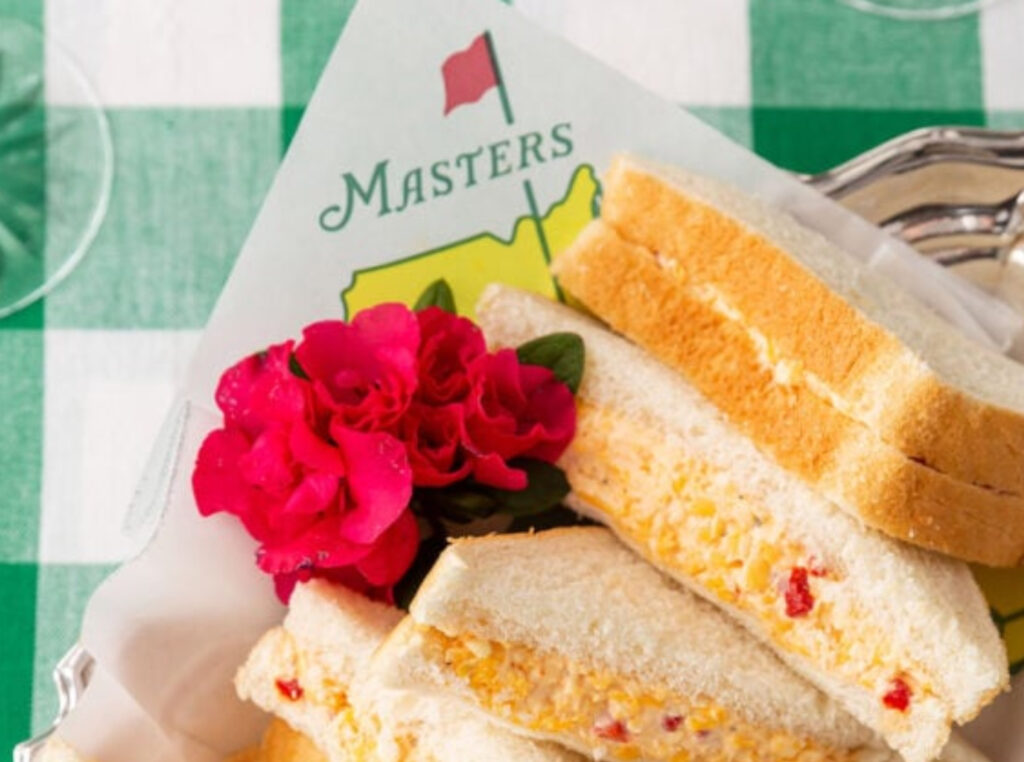
In the world of sports, some things evolve constantly—equipment, strategy, media coverage, athlete training, even the rules. But then there’s The Masters Tournament at Augusta National Golf Club, where some things are deliberately kept the same. The grass is cut to perfection. The azaleas bloom like clockwork. The tone remains hushed and reverent. And the pimento cheese sandwich is still $1.50.
In 2025, as Scottie Scheffler and Rory McIlroy tee off as tournament favorites, fans might debate yardages, swing mechanics, or which hole will be the turning point on Sunday. But everyone agrees on one thing: the food prices at The Masters are nearly mythical. While everything outside the gates of Augusta seems to inflate yearly, inside the grounds, you can still get a full meal for less than the price of a fancy coffee.
Let’s break down the real tradition unlike any other—how The Masters keeps food not just affordable, but shockingly cheap, and why that matters to fans and the tournament’s legacy.
A Menu Frozen in Time
At The Masters, you won’t find overpriced gourmet burgers or $10 bottled water. Instead, you’ll find a tight, nostalgic, and unmistakably Southern menu that hasn’t changed much in price—or philosophy—in over two decades.
The legendary pimento cheese sandwich? $1.50.
The egg salad? Also $1.50.
Classic Masters chips? A dollar.
Peach ice cream sandwich? $2.
Domestic beer? $6 (up from $5 last year, but still a bargain by sports stadium standards).
Imported beer or wine? Also $6.
New this year: a savory Southern tomato pie, yours for just $3.
It’s not just affordable; it’s a conscious throwback. In a world where a bottle of water at a stadium can cost $7, The Masters menu is borderline defiant in its pricing.
Back in 2000, beer at The Masters cost $1.75. That’s less than what a ball marker costs in the merch tent today. The $6 beer in 2025 may seem like a leap from that, but it’s still an outlier in the sports world, where beer prices regularly soar past $12.
Why It Matters: Fan Experience Over Profit
At most major sporting events, concession prices are a sore spot. The food is often mediocre and outrageously expensive. Fans expect to get gouged. The idea is that once you’re inside, they’ve got you. A captive audience equals big margins.
Augusta National Golf Club doesn’t play that game.
The Masters makes money hand over fist regardless—merchandise sells out, ticket demand is off the charts, and TV rights are extremely lucrative despite a very limited broadcast schedule. But Augusta has chosen not to squeeze every dollar out of its guests at the concession stand. It’s an intentional move that reflects the club’s broader strategy: control the experience, preserve tradition, and build goodwill.
They know that $1.50 sandwiches don’t just feed hungry patrons—they send a message: you’re valued, not exploited.
The Psychology of Affordable Nostalgia
The food prices are more than just a fan perk—they’re a powerful branding tool.
The Masters is all about curated nostalgia. From the announcers’ hushed tones to the lack of visible cell phones to the retro font used on the scoreboards, everything is designed to evoke a timeless, almost sacred feeling. The food pricing fits perfectly into that narrative. It makes visitors feel like they’re stepping back into a purer version of sports—before corporate bloat, before $18 nachos, before nosebleed seats cost a mortgage payment.
When fans buy a $1.50 sandwich, they’re not just enjoying a snack—they’re buying into the ethos of Augusta: elegance, simplicity, consistency.
The Menu: Minimalist and Iconic
The Masters doesn’t need a sprawling concessions lineup. In fact, part of its charm is the restraint. The offerings are simple, Southern, and purposeful.
The Classics:
- Pimento Cheese Sandwich: Arguably the most famous item. Served on white bread, wrapped in green cellophane. It’s polarizing—people love it or hate it—but it’s pure Augusta.
- Egg Salad Sandwich: Another throwback item, unpretentious and comforting.
- Ham and Cheese on Rye: Heartier, but still under $3.
- Barbecue Sandwich: For something hot, smoky, and Southern.
- Peach Ice Cream Sandwich: Sweet, regional, and a fan favorite on warm days.
New in 2025:
- Tomato Pie: This savory addition nods to Southern food traditions, with a buttery crust, ripe tomatoes, cheese, and herbs. It’s the kind of menu innovation Augusta embraces: rooted in place, not trendy.
Drinks:
- Beer (domestic or import): $6. Cold, in unbranded cups to avoid any sponsorship clutter.
- Wine: $6. Same story—no labels, no fuss.
- Soft Drinks and Sweet Tea: Also reasonably priced, with souvenir cups available for collectors.
The Real Business Model: Exclusivity and Control
You might wonder: how can The Masters afford to keep prices this low?
Simple: they don’t need the money. Augusta National operates on a model of extreme control and exclusivity. They limit the number of tickets sold each year (many of them going to patrons who’ve held them for decades). The TV coverage is tightly controlled. The on-site branding is minimal. Sponsorships are discreet.
But one place they don’t skimp? Merchandising. The Masters gift shop is a frenzy of buying. Patrons drop hundreds—sometimes thousands—of dollars on limited-edition hats, shirts, ball markers, tumblers, and more. Some even hire locals to stand in line and buy extra items. That’s where Augusta makes a killing.
Concessions, on the other hand, are a loss leader—or more accurately, a goodwill investment. They make The Masters feel different, more fan-centered. And that’s priceless for brand equity.
A Southern Identity Preserved
Beyond the business and nostalgia, there’s also a cultural angle. The Masters is unapologetically Southern, and the food reflects that. You’re not going to see quinoa salads or poke bowls on the menu. Instead, it’s egg salad, BBQ, and peach ice cream—foods with deep roots in the region.
The tomato pie fits right into this ethos. It’s the kind of dish someone’s grandmother might make for a summer picnic. Its addition shows that Augusta isn’t frozen in time—they’ll evolve, slowly, and only if it fits their vision.
Contrasting the Rest of the Sports World
For comparison, here’s what a day of eating looks like at some other big sports venues in 2025:
- NFL stadium hot dog: $8
- MLB domestic beer: $13
- NBA nachos with cheese: $11
- NHL bottled water: $6
- Tennis US Open honey deuce cocktail: $22
The Masters is not just behind those prices—it’s operating in a different galaxy. And fans love it for that.
The Merch Madness Helps Offset It
While food prices are low, the souvenir shop is where The Masters makes up the margin. Hats go for $30. Polos for $90 and up. Limited-edition items? Priceless—and quickly resold online for double or triple the price.
Augusta allows this contrast. They know that fans will spend big elsewhere, especially if they feel like they’re getting a break on essentials like food and drink.
Patron Loyalty: Built Bite by Bite
Augusta doesn’t have to advertise The Masters like other events do. They don’t run flashy social campaigns. They don’t hype up merch drops in advance. They don’t need to. Word-of-mouth does it all.
A big part of that loyalty comes from the experience—the comfort, the familiarity, the hospitality. And yes, the food. When fans tell their friends about their trip to The Masters, they’ll mention the beauty of the course, the precision of the golfers—and they’ll absolutely mention that $1.50 sandwich.
It’s part of the lore.
Impression
In a world where everything seems to get more expensive every year, The Masters’ food pricing is an anomaly—and a strategic choice. It’s not just about food; it’s about identity. It’s about resisting the urge to monetize every square inch of an event. It’s about creating a space that feels set apart from the rest of the commercial sports machine.
As Scottie Scheffler and Rory McIlroy chase the green jacket, and as fans from around the world walk the fairways of Augusta, they’ll know they’re part of something different. Not just because of the golf—but because of the values baked into every part of the experience.
And sometimes, that experience comes wrapped in green cellophane, filled with pimento cheese, and priced at just $1.50.
Now that’s a tradition worth keeping.
No comments yet.








